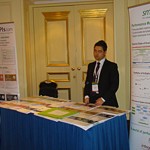NAM&R – A Best Practice Example of the BSC in Action

Twenty-three years have passed since Robert Kaplan and David Norton‘s Balanced Scorecard has first appeared. During these ten years, a lot of companies, from diverse fields such as engineering, communications, electronics, or the public sector, have adopted the same scorecard in the hopes of improving their performance management framework.
In their book, The Strategy-Focused Organization, Robert Kaplan and David Norton reveal how many companies have successfully used the Balanced Scorecard in an attempt to build a brand new management framework in which strategy is not a fringe element, but stands at the center of the company’s main management processes and systems. The book is an in-depth study of more than 20 companies that have attempted to reach their highest level of performance through this scorecard.
Mobil North America Marketing and Refining – NAM&R, is one such company. Kaplan and Norton believe that this company “is perhaps our best example of putting the five principles of a Strategy-Focused Organization into practice”. The five strategies they talk about are:
- translate the strategy to operational terms;
- align the organization to the strategy;
- make strategy everyone’s everyday job;
- make strategy a continual process;
- mobilize leadership for change.
One major problem some companies came face to face with, when trying to create the ideal Strategy-Focused Organization, was the impossibility to sustain the energy to deliver the expected results. Even though their managers used everything they learned during the conferences and the seminars and succeeded in creating an appropriate Balanced Scorecard, they couldn’t take the whole process to the next level. The question here is what caused this failure.
The best way of answering this question is by looking at the way in which Mobil NAM&R successfully applied the aforementioned principles. The year was 1992 when things started changing for Mobil NAM&R.

Winds of change – new vision, new strategy
First off, Bob McCool become the head of the company; secondly, he brought a new vision and a new strategy to the fore. Thirdly, he and his leadership team developed a Balanced Scorecard that helped strengthen and unify the company’s previous strategy. They also included representatives from shared service units in the leadership team, such as HR, marketing, information technology, etc., so that information related to all departments could be integrated into the planning.
For them, it was vital that the whole organization knows about the new strategy and the Balanced Scorecard, so that every process and decision could support the strategy.
1995 was the year when McCool confirmed his beliefs in this strategy. Because of the warm winter in North America, the sales of heating oil and natural gas were low and the company was faced with a fall in revenues.
By relying on this strategy, McCool realized that the poor financial performance wasn’t due to his employees’ lack of involvement, but because of external conditions that could not be controlled by his employees. As those parts of the scorecard that the employees could control were revealing an increase in performance, Bob McCool confirmed the fact that this strategy was working and that the company was heading towards a bright and profitable future.
The non-financial measures of the Balanced Scorecard, those that can be influenced by the employees, reveal a company’s power of sustainability. In the short run, a company’s performance can be affected by external factors: the weather, energy cycles, economic cycles, etc. However, if the company is able to invest, even during those difficult times, in new product development, employee capabilities, customer relationships, etc., then, they can rise above their competitors when external factors improve.
After installing the Balanced Scorecard at Mobil, they convened to have an annual meeting of the top 125 managers, where they discussed scorecard objectives, measures, and targets for the new year. What they wanted was for the whole company to be aware of the new strategy and of the ways in which it could be implemented. When Bob McCool retired, Brian Baker became the head of NAM&R. Baker continued McCool’s legacy by constantly reinforcing the central role of the scorecard in Mobil’s management system.
Building an entire organization that has at its core a Balanced Scorecard and that is aligned to and centered around this strategy, requires the constant attention of the senior executive team, which must show permanent implication and ongoing leadership.
Mobil was successful because they touched all the bases and they made sure that their strategy would not only be appropriately implemented but also sustainable. If the employees of a company don’t show active leadership and ongoing reinforcement, you cannot obtain significant results by simply implementing a BSC and leaving it at that. You need the whole package to succeed and in this case, the package means both the instrument and its users – your employees & managers.
Image source:

Tags: Balanced Scorecard, David Norton, Performanc Management, Robert Kaplan





